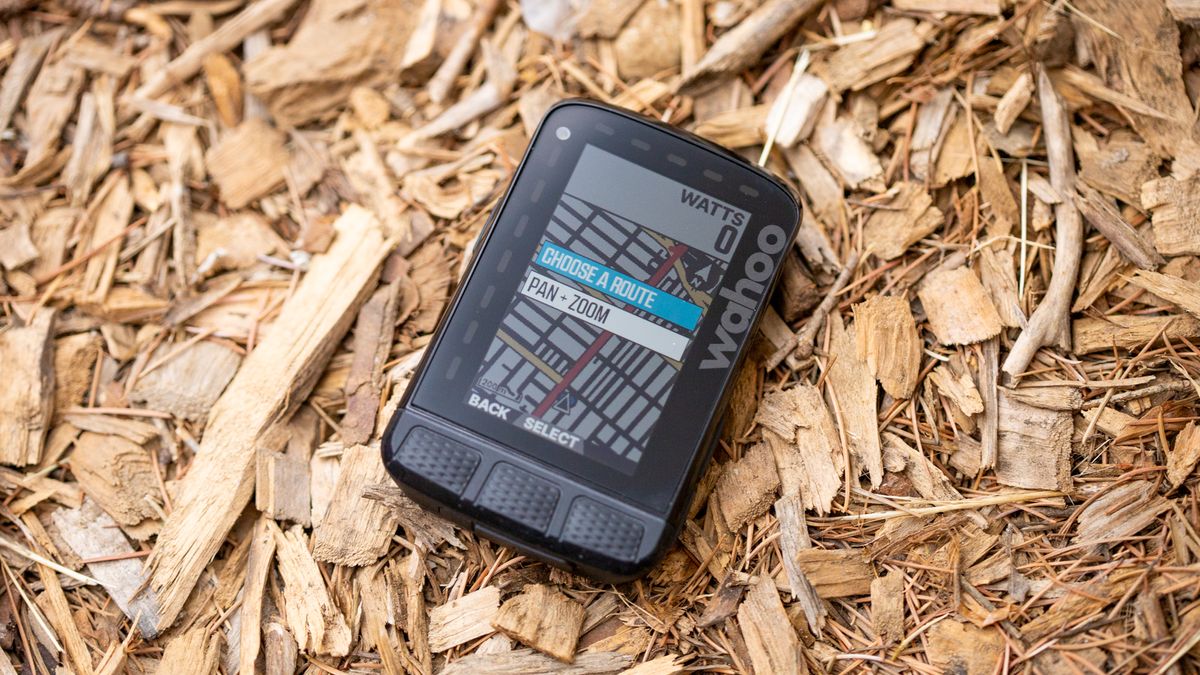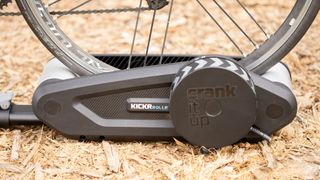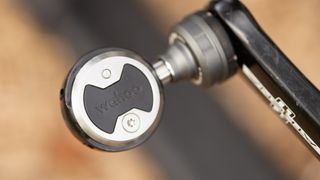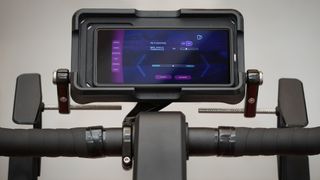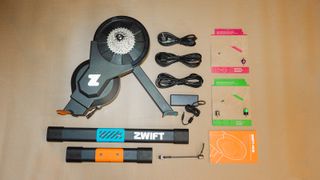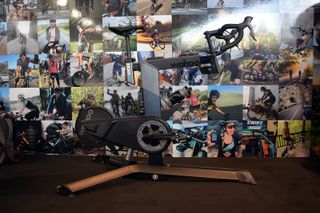Over the last few years, the news from Wahoo has been increasingly bad. While the brand continues to show up in our lists of the best smart trainers and the best bike computers, that coverage has taken a back seat. What’s been driving the conversation instead is a slow drip of financial news as ratings agencies increasingly sounded alarm bells about Wahoo. It got to the point where Wahoo stopped being able to conduct normal business and the creditors took over. It looked like whatever was coming next, Wahoo as we all knew it wasn’t going to exist anymore. Then, last week, a press release went out.
Except the press release didn’t say quite what we expected. The change of ownership was there, though not stated explicitly, but there was something about the new owner. It wasn’t some large company that controlled a bunch of cycling brands, however. Instead, the press release stated “Led by Wahoo’s Founder, Chip Hawkins, Wahoo has fully recapitalized its business with significant equity support from new and current investors with substantial experience in supporting diverse connected fitness and endurance athlete platform businesses.”
The man who founded Wahoo was once again taking ownership control. As it turns out, Chip Hawkins didn’t have the capital to go it alone. The ownership of Wahoo now rests with four equal partners but the important detail is that the debt that had been acting as the albatross around the neck of the company is now wiped clean. While Wahoo still faces challenges ahead, the company will do it on solid footing.
What happened?
Wahoo has been struggling recently but it’s never been an issue of the products or services the company sells. When American credit rating agency, Moody’s, published an analysis along with the rating downgrade, the company stated “Wahoo benefits from its strong market position in the cycling and smart fitness products market, supported by its good brand recognition, product innovation, and high product quality.” So, with that information, why was Waho facing such extraordinary challenges?
While many cycling companies are struggling post-pandemic, Wahoo’s troubles didn’t start there. The troubles that Wahoo has so publicly been experiencing actually started with a successful partnership way back in 2018. The long forgotten headline from the time is “Norwest Equity Partners Expands Active Lifestyle Investment Platform with Wahoo Fitness.”
According to the press release, it was the first time Wahoo partnered with an institutional investor, and Hawkins said at the time, “We are excited to work with an investment partner like NEP.” The same press release goes on to quote Hawkins saying, “Our partnership with NEP is a direct reflection of the success we have built to date, and we are excited for the opportunities that lie ahead with their team by our side. We are confident our partnership with NEP will help us achieve our next phase of growth.”
At the time, Wahoo was growing the company’s core products but there was more opportunity out there. NEP stated simply “Investment capital will be used for product portfolio expansion and strategic investments.” The partnership was successful and Wahoo acquired both Speedplay and Sufferfest in 2019. Those investments, seemingly built on the back of the capital injection, paid off well for Wahoo. When the world was suddenly thrown into chaos in 2020 Wahoo had exactly the position the company needed to take advantage of market forces no one could have seen coming.
This is where things took a turn, though. Wahoo experienced growth that no one could have expected and the company was suddenly worth more than anyone would have bet. We don’t know the thinking at NEP before that time, but NEP is in business to make money through strategic investment. When Wahoo was at a peak position, NEP wanted to cash in its chips.
With NEP getting out, Wahoo needed a new partnership. Someone had to buy that stake and that someone turned out to be Rhone Equity. The problem is that NEP correctly read the room and sold at the peak. Rhone Equity on the other hand, bought at the peak, and rather than paying cash, it was a leveraged purchase that rested on some incorrect assumptions.
Although everyone involved knew that sales would soften post COVID, that wasn’t the full picture of what happened. Sales did soften but the softening sales also came packaged with severe supply chain disruptions and an uncertain global economy. In fact, the biggest problem was really the supply chain.
Like everyone, Wahoo ramped up production at the height of demand. The supply chain slowdown meant that when those products finally made it into retailer inventory, demand had softened. It’s debatable how close Wahoo came to accurately estimating the amount sales would drop post COVID but, again, that wasn’t the issue. The bigger problem was that as casual cyclists dropped out of the market, and sales softened, the global economy also softened and even serious cyclists slowed their spending. At the same time, retailers already had a glut of previously paid for products. The few customers still out there buying products weren’t funnelling money back to Wahoo as retailers had no need to restock.
Even in the face of these business headwinds, Wahoo may have been able to survive. Companies have lean years and many are able to make it through but Wahoo had a huge debt hanging over the company’s head. Wahoo wasn’t stretched thin because of bad product investments, the brand was paying for an overpriced buyout right before the market shifted more than anyone expected. Frequent news reports of cash flow and debt payment issues certainly didn’t help.
What comes next?
Right now, Wahoo is debt free and plans to stay that way. That’s a good start, but the company doesn’t expect everything to be instantly fixed. Wahoo thinks we are still in the post COVID hangover period and markets still need time to normalise. As for when we might be, the crystal ball remains cloudy but Wahoo expects late in 2024.
Perhaps more importantly, when asked who’s in charge of the company, it was clear that it wasn’t the money men and no one is looking for a quick buck. Rhone Group is still on board as well as David Wichmann, RZC Investments, and Hawkins, but it sounds like the partners are taking a long term view. Money will always come with influence and the partners are part of the conversation but “Wahoo is an innovation company.” Products and services that best serve consumers are where the company is focusing.
In terms of layoffs, Hawkins is hopeful that’s done, but his tone on the subject was cautious. At every opportunity, Hawkins demurred from taking credit for the vision of the company. Instead, he repeatedly thanked those under him who did the hard work of bringing products to market. Seeing him discuss laying off those same good people you could see visible discomfort and he was clear that they would be cautious about bringing new people on. Still, while there will be no rush to start hiring again, it sounds like Wahoo should see a net expansion of employees in the future.
That puts the focus back on products. As it stands, Wahoo is both an indoor company and an outdoor company but Hawkins, and CEO Mike Saturnia, were quite bullish on expansion on both sides of the business. In fact, the two were adamant that Wahoo was in fact not an indoor or outdoor company but rather a company dedicated to “making a better athlete.” The products aren’t siloed as indoor and outdoor but instead follow the athlete. Each side of the business grows the other with the goal being an expansive ecosystem. It doesn’t matter if you are riding indoors or outdoors, or even if you are cross-training, Wahoo wants to have something for you.
Despite that, it’s clear that there’s a lot of excitement around indoor training. When asked about that obvious excitement, Hawkins and Saturnia were both quick to put the focus on the relative newness of indoor cycling. Hawkins especially is a tinkerer and a product guy so he’s excited to figure out new things in a category that isn’t yet fully fleshed out. The pair were clear that it was important that future innovations stay true to the Wahoo brand and don’t alienate existing users. The most freedom around that is in the indoor space.
When asked more specifically about the momentum Zwift has with indoor cycling, Hawkins indicated he thought there was plenty of room for everyone. While there are many people who have found a home with Zwift, the brand can’t possibly cover everything. Wahoo was also keen to mention the strategic advantage of having a robust hardware business to help build value for the software and vice versa. Subscription fatigue is a thing and Wahoo would hope to offer everything without a need for multiple subscriptions.
Obviously Wahoo isn’t telling what’s coming next in any of this discussion. No one expected they would even if journalists might try to get something to slip. Still, Wahoo did drop one tantalising clue by saying the brands primary categories are trainers, computers, pedals, and “something new”. You can make your bets as to what that means but innovation is definitely back on the table.
What about the Zwift lawsuit?
When asked, Hawkins was visibly delighted to have the chance to set the record straight. He expressed frustration that in the past he’s had to watch reports from the sidelines that he says aren’t accurate. Specifically he wants to make it clear that “you can’t patent a smart trainer.” He said the Kickr takes inspiration from Computrainer and that others take inspiration from the Kickr. Hawkins even mentioned Tacx by name as a competing product that wasn’t problematic.
Instead, what the Zwift vs Wahoo lawsuit is about is protecting specific ways of building a product. You can’t patent a smart trainer but you can patent specific details about how it’s built. Hawkins talked about how Wahoo had to protect their patents when a competing company copied their design. Whether that is true or not is something we will see the courts decide as time goes on but Hawkins would at least like to see the discussion framed differently in the press.
The conversation around the Zwift Hub trainer goes deeper than the question around patent validity and infringement, though. The existence of the Zwift Hub in the market changes the conversation around pricing. Before the Zwift Hub the only way to get a smart trainer at that price was to shop the used market. Now there’s a new expectation, and according to Hawkins “it’s not sustainable to sell a product with the quality that we have at that price point.” Hawkins went on to express support for local bike shops and the expenses that distribution incurs. Ultimately, it sounds like win or lose, Wahoo is going to look to innovation for differentiation instead of price.
Chip Hawkins is an athlete
Even when given the opportunity Hawkins wasn’t willing to step into a description as a Steve Jobs like visionary leader. Instead, Hawkins describes his role in the company as more of a cultural leader. His role is to make sure that the right culture exists from top to bottom under the Wahoo umbrella.
Part of that culture, Hawkins says, is the Apple “think different” motto but part of it is who Chip Hawkins is; an athlete. When asked, there was genuine enthusiasm about riding a bike and spending time doing the things that Wahoo sees its customers doing. Hawkins said “every time I get on the bike, I absolutely, positively, love it.” Hawkins is back in a leadership role at the company he founded. As consumers, we can take comfort in knowing there is once again an athlete creating products for other athletes.

